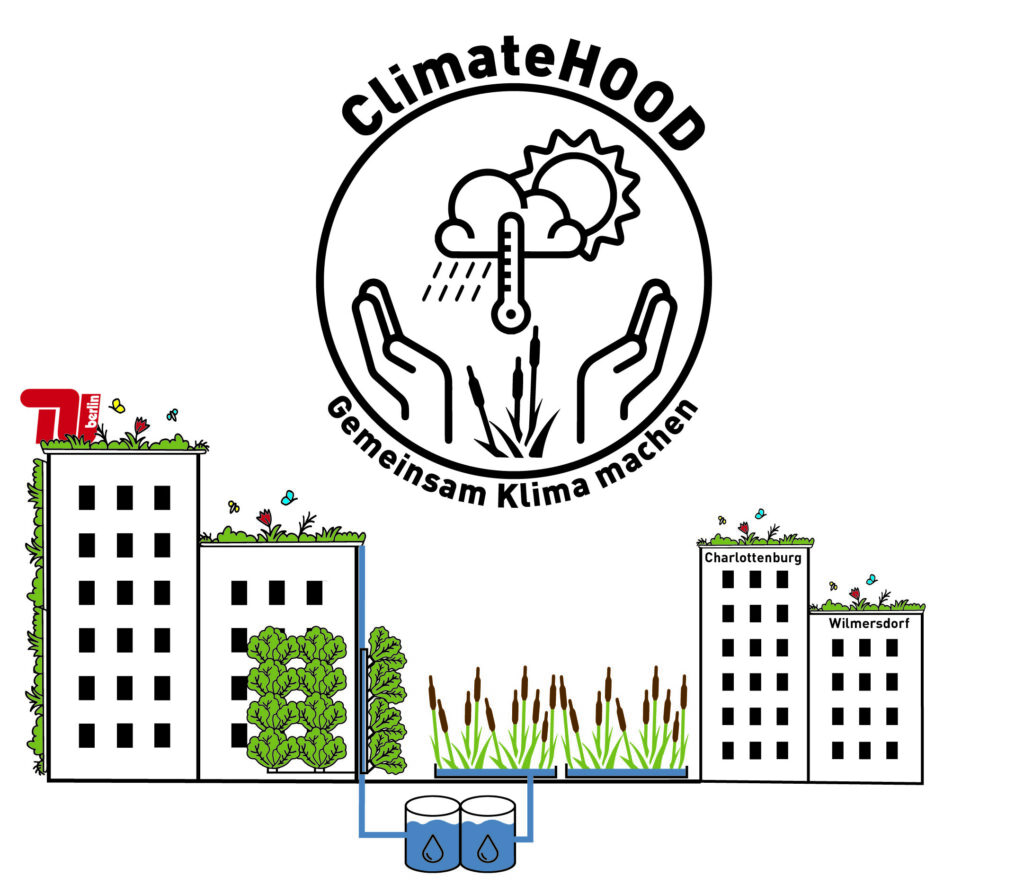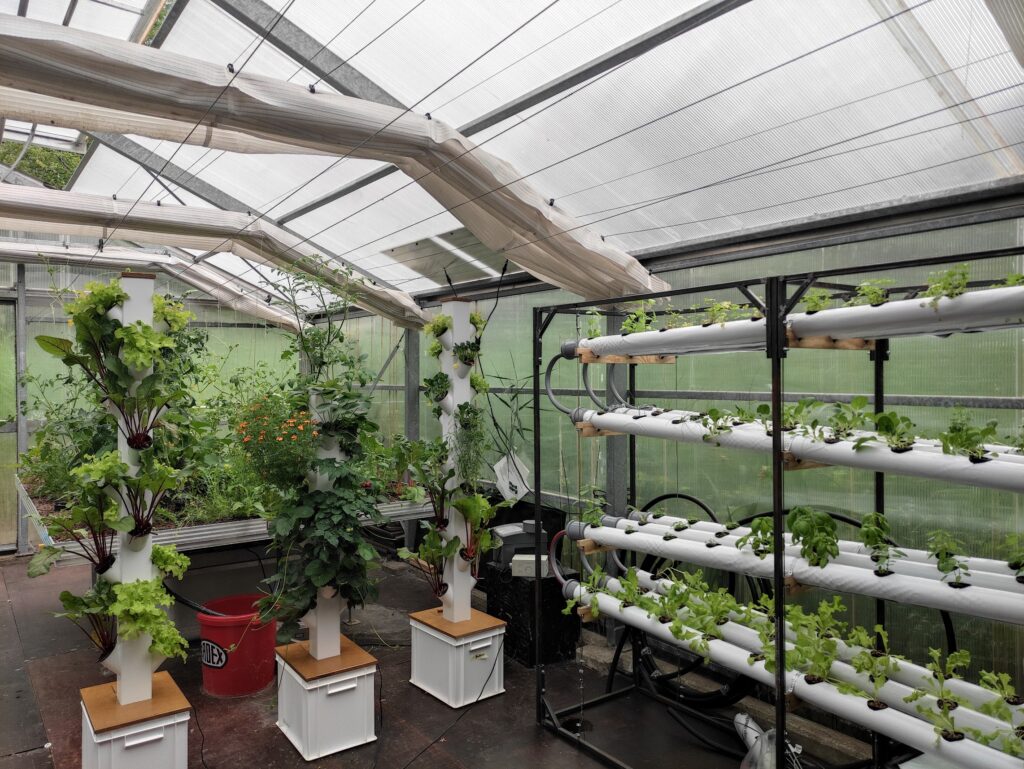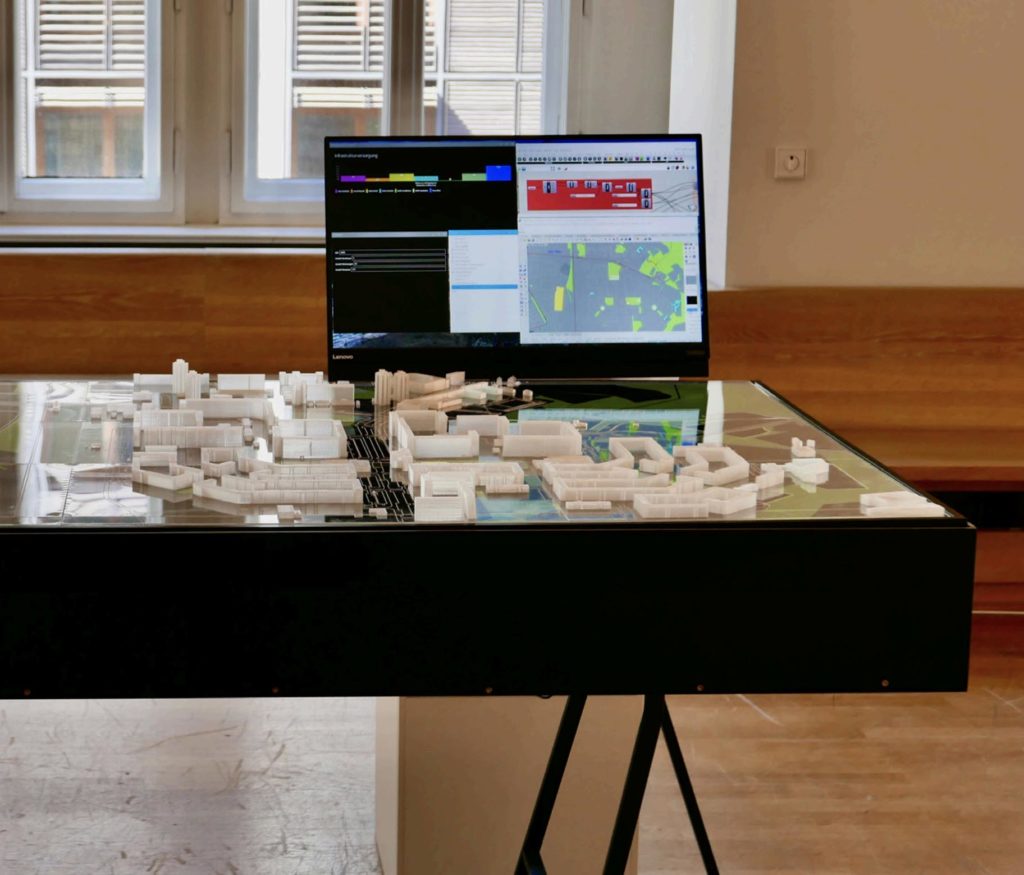ClimateHOOD_CampusPARK Charlottenburg
TU-Campus as part of the sponge city
The Charlottenburg campus is a living lab of transformation. With many experiments and innovative solutions, it is shown how climate protection and climate adaptation can be designed. In the context of the project ClimateHOOD_CampusPARK Charlottenburg, structural measures will be carried out on the TU campus over the next three years: Rainwater will be drained from selected roofs and temporarily stored in order to be available for various uses. According to the sponge city principle, retention spaces are to be developed on roofs, on facades and as open spaces at the TU Berlin (CampusPARK). Above- and underground cisterns retain rainwater, as do natural green-blue sponge structures such as reed beds, mini-moors or urban wetlands, green facades and vertical farms. These are to be tested and further developed as productive and regenerative management areas of the climate and circular city. The rainwater is transferred into a natural cycle and cools the urban space.
The TU’s living lab center, the StadtManufaktur Berlin, is responsible for the conception and implementation of these measures in close cooperation and project coordination with the Environmental And Nature Conservation Office Of Charlottenburg-Wilmersdorf. The research-oriented, interdisciplinary master program Design & Computation between UdK and TU is a partner in ClimateHOOD_CampusPARK Charlottenburg with research contributions and science communication. The project is funded by the Federal Ministry of Housing, Urban Development and Construction within the program Adaptation of Urban Spaces to Climate Change program.
Research results from the living labs Roof Water-Farm and Mobile Blue-Green Infrastructure c/o GartenLeistungen are incorporated into the implementation. Climate-relevant data is collected and various events for social co-production are designed and implemented. In the form of transdisciplinary workshops as well as participation and teaching events, as many actors as possible should participate in the project, knowledge will be generated and shared, and technical and spatial solutions will be tested. The adaptation strategies developed should also be transferred to the district of Charlottenburg-Wilmersdorf in the sense of a climate neighborhood. In the project, climate adaptation scenarios are developed and prepared as a user-friendly web application.
Thematic approaches:
#blue-green infrastrucutre #productivecity #KlimaMachen #spongecity
Spatial approaches:
#TU-Campus #Campus Charlottenburg #SchwammstadtBerlin #Bezirke
Partners / Alliances:
Charlottenburg-Wilmersdorf District, Environmental and Nature Conservation Office
Media information:
Press release TU Berlin from 14. Februar 2023
Press release of District Office Charlottenburg-Wilmersdorf from 09.12.2022
Kontakt:
StadtManufaktur:
Dr.-Ing. Anja Steglich, Dr.-Ing. Grit Bürgow, Dr. Audrey Podann
anja.steglich@tu-berlin.de
grit.buergow@tu-berlin.de
audrey.podann@tu-berlin.de
Charlottenburg-Wilmersdorf District, Environmental and Nature Conservation Office:
Dr. Ulrich Heink, MSc. Andreas Horn

Through green roofs and facades, natural retention areas in open spaces and edible facades, rainwater is to be managed and valued decentrally according to the sponge city principle. Graphics: Andreas Horn

Real experiments and experiences from living labs are transferred to everyday campus life. Here you can see the evaporation beds from the Mobile Blue-Green Infrastructures living lab. Photo: Grit Bürgow

Real experiments and experiences from the living labs are transferred to everyday campus life. The greenhouse of the living lab ROOF WATER-FARM can be seen here. Photo: Grit Bürgow

Climate adaptation scenarios are created as non-structural measures on the TU campus and in the district. The digital data table is used for communication between the central university administration, departments and specialist offices of the city administration and as a tool for co-production. Photo: Anja Steglich

Leave A Comment
You must be logged in to post a comment.